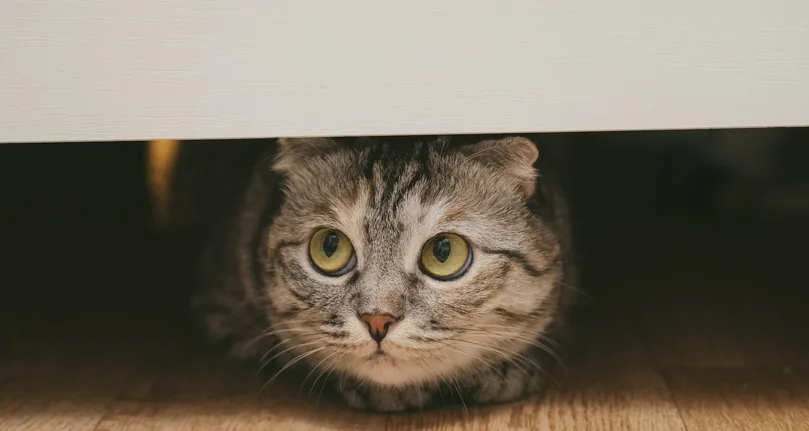
Cats have a reputation for being creatures of habit and tend not to cope well with changes in their surroundings or routine; however, most cats adjust with time, assuming changes are not ongoing. That said, a major change—like moving, addition of a new animal or baby to the household—could induce significant distress even in the most adaptable cats.
Taking a Proactive Approach
Clients often seek help after their cat is already struggling as a result of a major life change (see Life Changes That Affect Cats). These patients could be better served if clients were educated ahead of time about the feline stress response. First-time wellness visits for newly adopted cats and kittens and visits to the clinic early in a cat’s life, including booster appointments and follow-ups, may be timely opportunities to raise awareness and provide preparatory information.
Life Changes That Affect Cats
Moving homes
Extended owner absence (eg, vacation, hospitalization)
New baby in the household
New animal in the household
Loss of another animal in the household
Home renovations
Change in household routine
Change in household members (moving in or out)
Handouts & Reading Materials
Clients may feel overwhelmed by the information they are receiving. Printed reading materials and links to online resources can make this information readily available and pique interest. For example, printed or electronic brochures saying Moving soon? Have you told your cat yet? could be placed in the lobby waiting area or linked from the clinic’s website, respectively. Relevant questions can also be included on the pre-examination questionnaire. One study found that a brief, pre-examination questionnaire enhances detection of behavior problems better than relying on clients to bring up concerns during the examination.1 Asking about current behaviors, as well as upcoming changes, can underscore the importance of the conversation if a major event is approaching.
Biggest Factors Affecting Cat Stress
Most cats experience alterations to their environment and routine at some point. Resiliency and coping style amidst these changes varies depending on genetic factors and early life experiences.3 Although some changes are more challenging than others, common factors that appear to heighten stress include4:
Lack of predictability (eg, social interactions, daily routine)
Unfamiliar surroundings
Presence of unfamiliar humans or other animals
Unpleasant physical conditions (eg, temperature, noise, pain)
Lack of control over the environment
How To Prepare a Cat for Change
Enrichment
An environment that meets the cat's behavioral needs and includes opportunities for behaviors they are highly driven to perform (eg, object play, scratch marking, safe plant chewing) should be set up and made readily accessible throughout the transition.2
Cats that feel safe and perceive some level of control over their immediate environment are more able to cope with impending change. Multiple options for elevated resting/perching along the periphery of rooms allow cats to maintain a safe vantage point of their surroundings. Access to a safe refuge (eg, room, bathroom, closet, large crate) where the cat can retreat and remain concealed also allows for a sense of control.
Calming, synthetic pheromone diffusers can increase feelings of safety and establish a sense of familiarity if added to the environment well ahead of the change and maintained thereafter. Having these options readily available and already a part of the current familiar environment is crucial when a major change is anticipated.
Familiarity
Establishing familiarity with anything new as far in advance as possible can be helpful. For cats, this often starts with scent familiarity. Clothes or other items that contain the smell of a new baby, animal, household member, or home can be introduced in a neutral area (ie, not the cat’s preferred resting place or eating station). To create a positive emotional association, clients can offer favored food treats and/or toys around the scented items. Scent preparation for new furniture or flooring can be accomplished by placing towels or blankets atop current couches, chairs, tables, and/or rugs for days to weeks ahead of time. These same covers can then be placed on the new items to maintain the familiar scents for several days after being added to the home.
Gradual Exposure
Breaking up the introduction of novel items into separate sensory experiences allows gradual adjustment and acceptance of these changes when presented in their entirety. Anticipated sounds (eg, crying baby, barking dog, construction noises) can be introduced via a recording at a barely perceptible volume in conjunction with positive associations (eg, food, play, one-on-one attention). Smart phone applications offer many options, and volume exposure can be delivered and controlled via wireless speakers. If the cat remains calm with each exposure, the volume can be increased 1 to 2 levels every few days. New and/or unexpected movement of childcare items, appliances, or other household items should be introduced only after the cat is comfortable with the scent, sights, and sounds of these items.
Carrier Comfort
Clients with cats that do not already have a positive emotional association with a travel carrier should be advised to establish one. Cats should be amenable to readily entering their carrier, as well as being carried, transported, and kept in the carrier for a few hours, as may be needed during some types of transitions and/or introductions.
Conclusion
Clients should be encouraged to call the clinic if their cat is showing signs of not adjusting (see Signs a Cat Is Not Adjusting Adequately to a Major Change) and/or is otherwise not returning to their normal behavior/personality within 1 to 2 weeks. Psychopharmacology may be helpful for cats that do not respond to environmental preparation alone and can be used pre-emptively for cats with existing anxious and/or aggressive temperaments.
Signs a Cat Is Not Adjusting Adequately to a Major Change
Prolonged hiding
Social withdrawal
Elimination outside of litter boxes
Hissing, growling, swatting, or biting humans and/or other animals that was not pre-existing
Excessive vocalization
Illness-related behaviors (eg, weight loss, constipation, hair loss, regurgitation)3